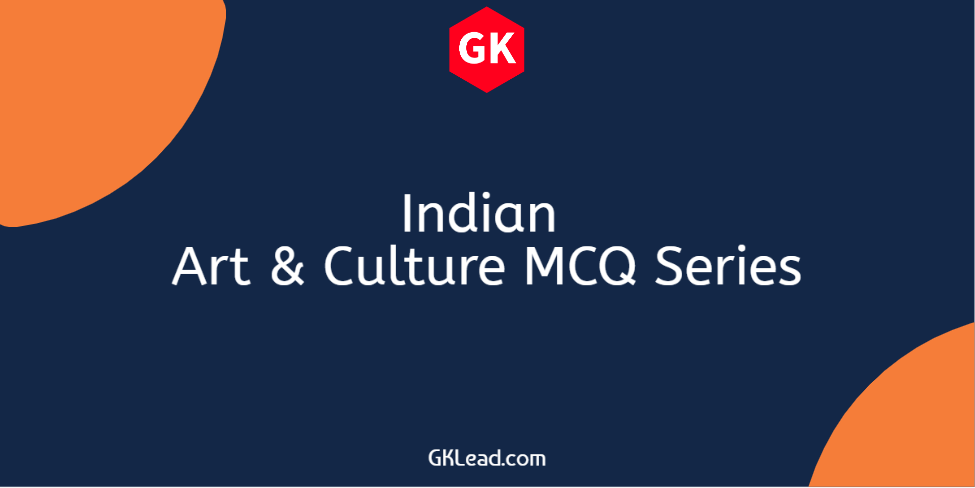Indian Art & Culture MCQ Set-10
Indian Classical Music MCQ for competitive examinations in India such as UPSC, SSC CGL, SSC CHSL, NDA, State PSC, Police recruitment and various government job recruitment examination by the Government of India, PSUs and the state Governments in India.
Q.1 Dancing Girl Sculpture was found in:
A. Mahen-jo-Daro
B. Harappa
C. Mahavalipuram
D. Nagapatnam
Answer: A. Mahen-jo-Daro
Note: Dancing Girl is a prehistoric bronze sculpture made in approximately 2500 BCE in the Indus Valley Civilisation city of Mohenjo-daro.
Q.2 Kathakali, a major form of classical Indian dance was originated in which of the following Indian state?
A. Tamilnadu
B. Kerala
C. Andhra Pradesh
D. Maharashtra
Answer: B. Kerala
Note: Kathakali is a Hindu performance art in the Malayalam-speaking southwestern region of Kerala.
Q.3 Who among the following is the author of the Natya Shastra, a Sanskrit treatise on performing arts?
A. Bharata Muni
B. Abhinavagupta
C. Varahmihira
D. None of these
Answer: A. Bharata Muni
Note: Natya Shastra is attributed to sage Bharata Muni, and its first complete compilation is dated to 500BCE to 500CE.
Q.4 Mohiniyattam, a classical dance of India was originated in which state of modern India?
A. Maharashtra
B. Kerala
C. Bihar
D. Madhya Pradesh
Answer: B. Kerala
Note: Mohiniyattam and Kathakali are popular classic dance in Kerala.
Q.5 What are the main tradition of Indian classical music?
A. Carnatic
B. Carnatic and Hindustani
C. Hindustani
D. Hindustani and Satriya
Answer: B. Carnatic and Hindustani
Note: Indian classic music has two major traditions: the North Indian classical music tradition is called Hindustani, while the South Indian expression is called Carnatic.
Q.6 Carnatic music originated during the rule of which of the following empire/dynasty?
A. Vijaynagara Empire
B. Chola Empire
C. Vakataka Empire
D. Chera Dynasty
Answer: A. Vijaynagara Empire
Q.7 Who among the following is known as the Pitamaha of the Carnatic music?
A. Purandara Dasa
B. Basavanna
C. Jayadeva
D. Kanaka Dasa
Answer: A. Purandara Dasa
Note: Purandara Dasa was a Haridasa philosopher-saint from present-day Karnataka, India. He was a composer, singer and one of the chief founding-proponents of Carnatic music. In honor of his significant contributions to Carnatic music, he is widely referred to as the Pitamaha (lit. “father” or “grandfather”) of Carnatic music.
Q.8 How many classical dance are recognized by the Sangeet Natak Akademi and the Ministry of Culture in India?
A. 8
B. 7
C. 10
D. 15
Answer: A. 8
Note: The classical dance recognized by the Sangeet Natak Akademi and the Ministry of Culture are Kathakali & Mohiniyattam from kerala, Sattriya from Assam, Manipuri from Manipur, Odissi from Odisha, Bharatanatyam from Tamilnadu, Kathak from Uttar Pradesh & Rajasthan and Kuchipudi from Andhra Pradesh.
Q.9 Sattriya dance is attributed which of the following saint & scholar?
A. Shankardeva
B. Madhavdeva
C. Harivara Vipra
D. None of these
Answer: A. Shankardeva
Note: Sattriya or Sattriya Nritya, is a major Indian classical dance. It is a dance drama performance art with origins in the Krishna-centered Vaishnavism monasteries of Assam, and attributed to the 15th century Bhakti movement scholar and saint Mahapurush Srimanta Sankardev.
Q.10 Theoretical foundation of the Odissi, a major Indian classical dance is attributed which of the following ancient text?
A. Natya Shastra
B. Dharma Shastra
C. Artha Shastra
D. None of these
Answer: A. Natya Shastra
Note: Natya Shastra is attributed to sage Bharata Muni, and its first complete compilation is dated to 500BCE to 500CE.
List of Indian Art & Culture MCQ sets from GKLead.com
- Indian Art & Culture MCQ Set-1
- Maurya Empire Culture MCQ Set-2
- Gupta Empire Culture MCQ Set-3
- Gupta Empire Culture MCQ Set-4
- Gupta Empire Art MCQ Set-5
- Ancient Indian Art MCQ Set-6
- Ancient Indian Art MCQ Set-7
- Medieval India Culture MCQ Set-8
- Indian Art & Culture MCQ Set-9
- Indian Classical Music MCQ Set-10
- Indian Art & Culture MCQ Set-11
- Indian Art & Culture MCQ Set-12
- Chola Dynasty Art MCQ Set-13
- Mughal Empire Art MCQ Set-14
- Bhakti Movement MCQ Set-15
- Bhakti Movement MCQ Set-16
- Bhakti Movement MCQ Set-17
- Modern Art and Culture MCQ Set-18
- Indian Art & Culture MCQ Set-19
- Ancient Indian Art MCQ Set-20

